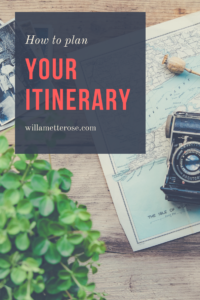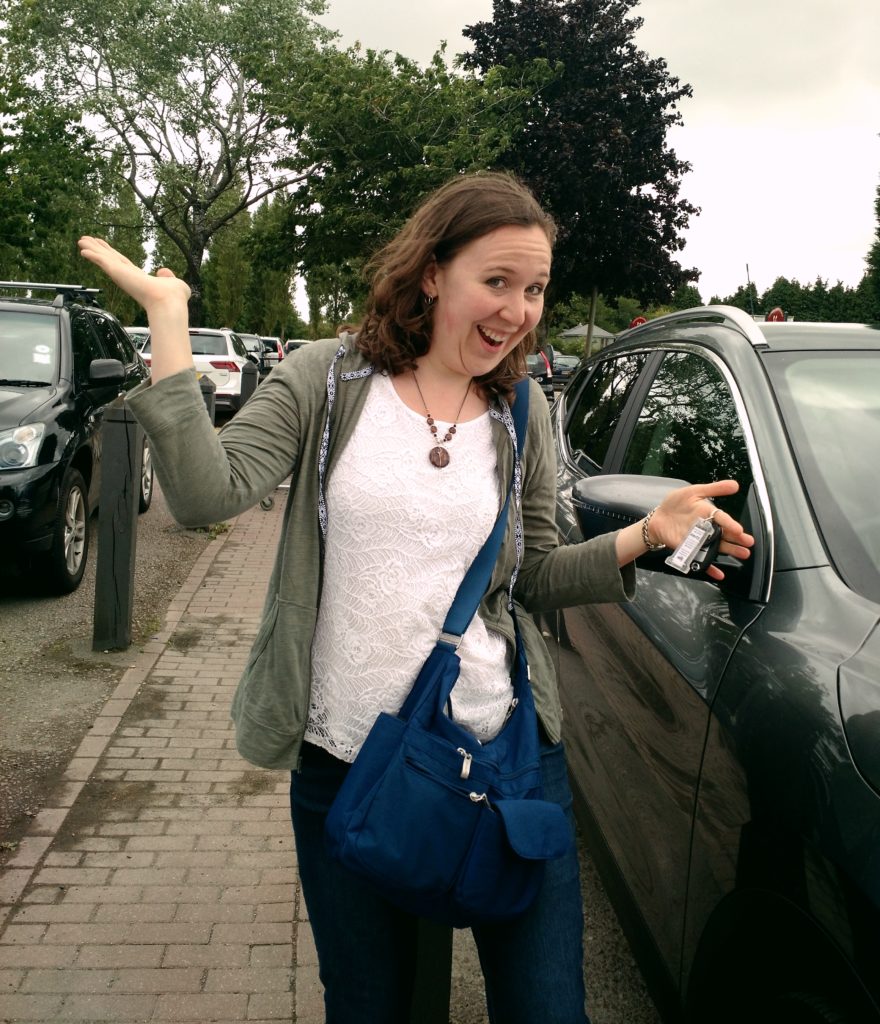When you first decide to take a road trip or overseas trip, it can be overwhelming to decide exactly where to go, where to stay, how much to do. There is so much to see and experience anywhere you decide to go! So how do you narrow down the options and plan a fantastic trip that fits you? Here’s how I break down the planning process….
Specific Dates That Can’t be Changed
Are there non-negotiable reservations during your trip? For example, are you attending a family reunion, wedding or memorial service, are you planning on going to a concert, show or festival? The very first step is to look at a calendar and figure out what kind of time frame you are dealing with and mark what dates you have to be somewhere specific. I’m a visual person, so it helps me to print off a blank calendar from the internet and scratch down ideas. Whether on the computer or on paper, put your must-be-here dates down and then work backwards and forwards from there.
Top Five Places
Make a list of the places you want to go in an area/state/country or things you want to do. First let your fancy run free, then come back a another day and narrow it down to your top five. When I was planning a trip for myself, sisters and girlfriends, I asked each of them to send me their top five things to see/do. Using Google maps, I looked at the different locations and how far away they were from each other and from the starting and ending point of our trip. Google maps can now give a travel time estimate whether you are using public transit or your own car, which is super helpful.
Narrow Down
By looking at Google maps and a calendar side by side and thinking for a few days, the possibilities for how to connect the dots should start to emerge. What places or activities would allow you to do more than one thing in a day? What activities need an entire day devoted to them? Are there any places you wanted to go or things you wanted to do that are really just too impractical or far away? Can you let them go? Do you want to devote an afternoon or day or more to just wandering downtown or in an area without specific plans?
Decide Where You Will Spend The Night
Once you can connect the dots of the locations to visit, think about how many nights you want to stay in each place. Keep in mind how long of a drive/bus/train ride it is from one location to the next (this is where Google maps is a lifesaver) and always plan extra time for delays and the unexpected. Think about your normal energy patterns and whether you’d prefer to travel to a new location at night after a long day of sightseeing or in the morning. Choose the town/area you will spend each night in. You can start booking accommodations now or later as you complete your itinerary.
Polish It Up
As a reasonable itinerary starts to take shape between your top five priorities, start looking at the rest of your list to see what you can add back in. This can also help you decide how many nights to spend in each location. Take time working back and forth between your wish-list, Google maps and a calendar until an itinerary takes shape that you truly feel excited about!
Tips to Keep in Mind
-On long distances, unless you drive super fast and never stop, Google maps often short-changes how long it will actually take to drive somewhere. On long road-trips, I have learned to add at least one hour to whatever Google gives me as a drivetime.
-When planning a road trip, check to see if any of the major highways are toll roads. Are you able to add tolls to your budget? If you avoid toll roads, how much extra drive time will it add to your day?
-If you are with a group, the more time you spend in the same place, the better! For my first-time overseas trip, we ended up staying in one location in Scotland for a week in the middle of a nearly month-long trip. Taking it easier for a week in the middle and not having to pack up all the time helped us avoid burnout and let us reserve enough energy to move around to many different locations during the other parts of our trip.
-Personally, I find it less stressful to stay in a central location and make longish day-trips, rather than stay in a different place each night. If you are a single or a couple, moving around a lot can be a viable option.
-If you are traveling and sightseeing in the same day, try to plan ahead for what you will do with your luggage. Can you leave it in your car? Can you check into your accommodations early? Does the train station have luggage storage? If you have to keep your luggage with you, you will probably not be able to walk long distances and some museums won’t allow large bags inside.
-Don’t shortchange yourself getting to the airport. Leave time in your schedule to get to the airport without rushing and allow extra time for mishaps and traffic.
-If you are catching a train, check to see how often the train runs. Is it going to mess everything up if you miss that train? If so, you better get there super early! If the trains run frequently, you won’t have to worry about missing one or one being full. Just catch the next one!
Were any of these tips particularly helpful to you? Any itinerary planning hacks I missed?


